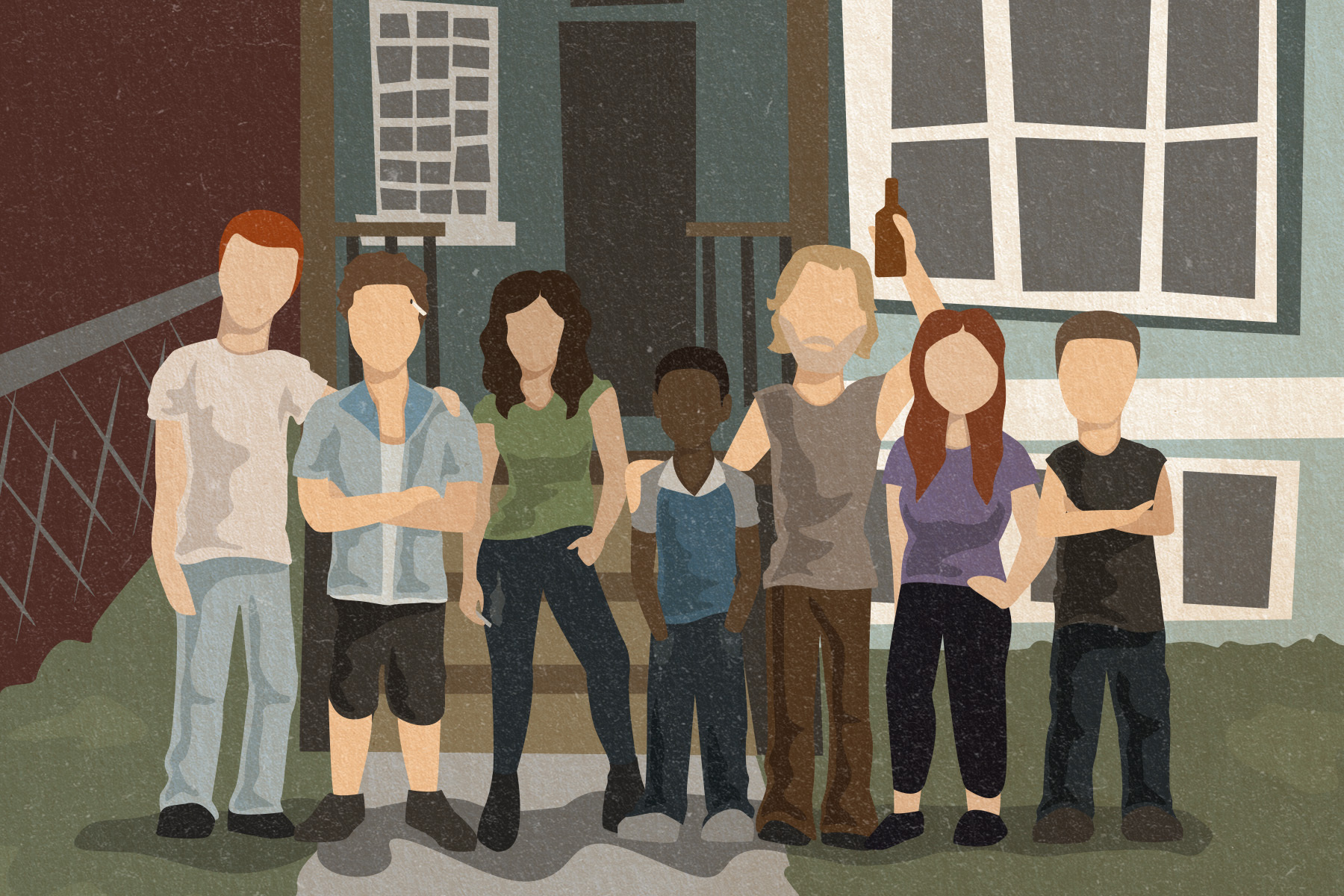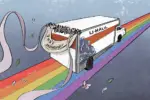A television show that hinges on the lives of a working-class and barely functioning family living on the South Side of Chicago sounds as if it would be more stressful to watch than entertaining. Yet, “Shameless” walks this very fine line as it demonstrates the highs and lows of the Gallagher family while they navigate life. The themes that the show explores, though the vessel is questionable, remain absolutely timeless.
A definite strength of the show is its nuanced characterization of nearly everyone in the primary cast. Each character is fully developed and thus as unlikable as they are likable. The oldest brother, Phillip, is easy for audiences to like (most of the time). He is extremely hard working and is determined to help Fiona, the oldest sibling, keep the family afloat in the near-constant absence of their parents. As the show progresses, his identity as a troubled genius leaves audiences stewing in an awkward mix of frustration and support as he struggles to define his future.
The array of mixed emotions surrounding Phillip’s character applies to each person in the Gallagher family. When Carl is sent away to a juvenile detention center, both the audience and the Gallagher family are sad to see him leave and worry about how his incarceration will affect his future. Yet, there is also a distinct lack of concern — everyone knows that he’ll be fine in juvenile prison. Each of these situations, and countless others, cause viewers to wrestle with their like and dislike of each character in the show.
This is because most of the characters are written as fully rounded people. Expert characterization is a distinct part of what makes “Shameless” stick with viewers for better or for worse.
Outside of well-executed character development, “Shameless” skillfully depicts the cyclical nature of poverty. Frank Gallagher, the father of the six children that make up the main cast, is an addict. Throughout the show, it is clear that he suffers from alcoholism as well as drug addiction and is unable to keep a steady job. His relationship with his children is complex and strained beyond belief.
A significant portion of the money that he and his family are able to hold on to is acquired through methods that are often illegal. The specter that haunts his character as well as his children is one of lost hope. While Frank is a fictional character, his predicament is the very real result of a society that cares little for anyone who is not healthy or wealthy enough to contribute to society. American capitalism as it exists is built so that people who can not contribute are left behind to make do. A just system that puts the well-being of individuals first would frame access to resources — like those that could help someone overcome challenges like addiction — as a right rather than a privilege. Yet, these struggles will endure as long as American society exists as it does today, further reflecting the timelessness of the show.
The themes that the show explores, such as class and access to resources, don’t date the show in a way that makes it seem out of touch. Familial relationships are yet another monster that the show tackles remarkably well. Having grown up witnessing the mistakes of their parents, each of the Gallagher children frantically tries to avoid repeating the same errors that their parents made. Each child tries, fails and overcomes in their own way.
Viewers watch as they struggle to reconcile with what one must do when they see the scariest parts of their family history reoccurring in their own life. Phillip begins flailing in the middle of his college career because of a budding issue with alcoholism. It is only after he realizes how his addictions parallel that of his father’s that he begins to redirect himself and make an effort toward recovery.
The second oldest of the Gallagher brothers, Ian, struggles when he is diagnosed with bipolar disorder — something that he shares with his mother. Because her refusal to treat the disorder looms over her relationship with all of her children, Ian at first feels that his diagnosis condemns him to the life that his mother led. Yet, just as his brother, he redirects himself while using his parents as a cautionary tale. The actions of these characters demonstrate that people are in no way, shape, or form, required to reproduce the traumas that their parents created. Rather, the ability to redirect oneself is always an option if it is desired in any way.
While the themes that “Shameless” explores are timeless, the vessel through which they are explored is questionable at best. Exploring life on the South Side of Chicago from the point of view of a white family feels strange given that, as of 2019, 93% of the people living on the South Side are Black. When the show is put in the context of this statistic, it feels odd that the perspective of the show is so overwhelmingly white — that is, until the director of the show, the production team and the writers are taken into account, all of which consist solely of white people. Given the lack of diversity among the people who developed the show, it makes sense that a white family is used despite being a very atypical representation of Chicago’s South Side. After all, why explore themes such as what it means to struggle as a person of color when you could uphold the idea that whiteness is the standard by which all things must be measured?
The Black people that do appear in the show can all be described with one word: silent. The only exception to this is Veronica, a family friend of the Gallaghers — though, seen from the lines that Veronica is given, it is painfully obvious that she is a white person’s interpretation of a Black woman rather than a whole character.
The majority of the Black characters that appear in “Shameless” are transient and used as props for the storylines that the white characters participate in. When Carl is released from juvenile prison he brings his friend Nick home with him. Nick is a tall Black man who speaks the majority of his lines when he is being taken back to prison. Aside from this, he is silent and depends on Carl to communicate his needs and desires. Situations such as this feed directly into a dynamic that Black men have been battling against since slavery: a forced fragility in the presence of their white counterparts.
The instances in which characterization falls prey to stereotypes in the show are countless and reflect poorly on the writers, producers and director. While aspects of the show are excellent and remain timeless, “Shameless” is an example of a show that would have been made undeniably remarkable if only people of color were a part of the creative process. Though perhaps the issue of inclusivity is as timeless as the content of the show itself.


















I am white. I am from the South Side. I have escaped poverty. When my husband first saw the show, he said, “I found your family on television.” Many episodes were so painfully relatable to my own upbringing. I find it ironic that a Lincoln Park yuppie seems to know is and what is not on the South Side and finds the need to pervert the show’s theme through a racially distorted lens. Poverty has no race. Where are you from “Chicago native”- Naperville? Sorry to ruin your own prejudices and stereotypes, but there are more than black people on the South Side and this show is very much some of our reality.